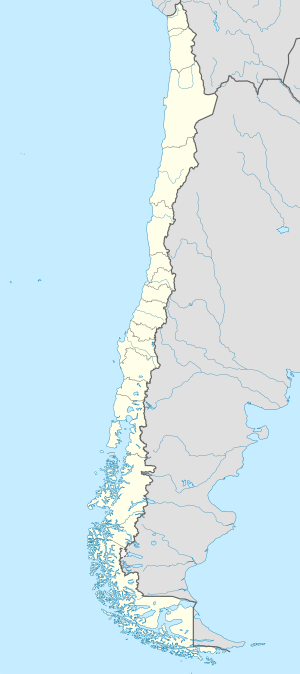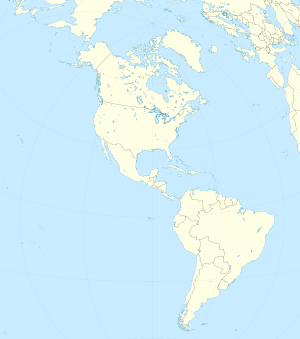
Back Slaget ved Angamos Danish Seegefecht von Angamos German Combate naval de Angamos Spanish Bataille d'Angamos French Angamosi csata Hungarian アンガモスの海戦 Japanese Slaget ved Angamos NB Bitwa pod Angamos Polish Combate Naval de Angamos Portuguese Бой у мыса Ангамос Russian
This article needs additional citations for verification. (August 2009) |
| Battle of Angamos | |||||||
|---|---|---|---|---|---|---|---|
| Part of the War of the Pacific | |||||||
 Naval combat during the Battle of Angamos. | |||||||
| |||||||
| Belligerents | |||||||
|
|
| ||||||
| Commanders and leaders | |||||||
|
|
| ||||||
| Strength | |||||||
|
2 armoured frigates 2 corvettes 2 transports |
1 monitor 1 corvette | ||||||
| Casualties and losses | |||||||
|
1 killed 9 wounded[1] |
31 killed 4 missing 162 captured 1 ironclad captured | ||||||
Location within Chile | |||||||
The Battle of Angamos (Spanish: Combate de Angamos) was a naval encounter of the War of the Pacific fought between the navies of Chile and Perú at Punta Angamos, on 8 October 1879. The battle was the culminating point of a naval campaign that lasted about five months in which the Chilean Navy had the sole mission of eliminating its Peruvian counterpart. In the struggle, two armored frigates, led by Commodore Galvarino Riveros Cárdenas and Navy Captain Juan José Latorre battered and later captured the Peruvian monitor Huáscar, under Rear Admiral Miguel Grau Seminario.
After the loss of the frigate Independencia at Punta Gruesa, Grau sought to challenge the outnumbering Chilean fleet with a harassing strategy, focused on inflicting as much damage as possible while avoiding a full-scale engagement. As Grau moved along the Pacific coast, he was chased by Admiral John Williams Rebolledo, who had been ordered to catch Grau no matter what. His failure cost him his commission, and was replaced by Riveros.
With a different strategy, Riveros managed to encircle Grau at Punta Angamos, about 80 kilometers north of Antofagasta. Falling in a trap set by Riveros and Latorre, Grau was forced to present battle after ordering the corvette Unión to escape to Perú.
Latorre, aboard Almirante Cochrane, engaged first. Taking advantage of the powerful Armstrong-type batteries with armour-piercing projectiles, Latorre shelled Huáscar for almost two hours. The monitor Huascar, with only ordinary elongated shot, could cause little damage to the Chilean ironclads and Grau was killed in action. However, his flagship continued the fight, while Riveros engaged her with the Blanco Encalada as well. After being battered for almost three hours, the Huáscar, unable to sustain combat, was boarded and captured and the battle ended.
The result was a complete success for the Chilean Navy, and secured its dominant position for the rest of the war. It allowed to prepare the invasion of the Tarapacá department, carried out on early November.
Chilean Navy dominance off the Pacific coast contributed significantly to success in the following land campaigns across the Atacama Desert that ended with Lima's fall in January 1881.
The Huáscar was repaired and served under the Chilean flag until its decommission, and now sits as a floating museum in the port of Talcahuano.
- ^ Bulnes, Gonzalo. Guerra del Pacífico, Tomo I, p 490
© MMXXIII Rich X Search. We shall prevail. All rights reserved. Rich X Search


